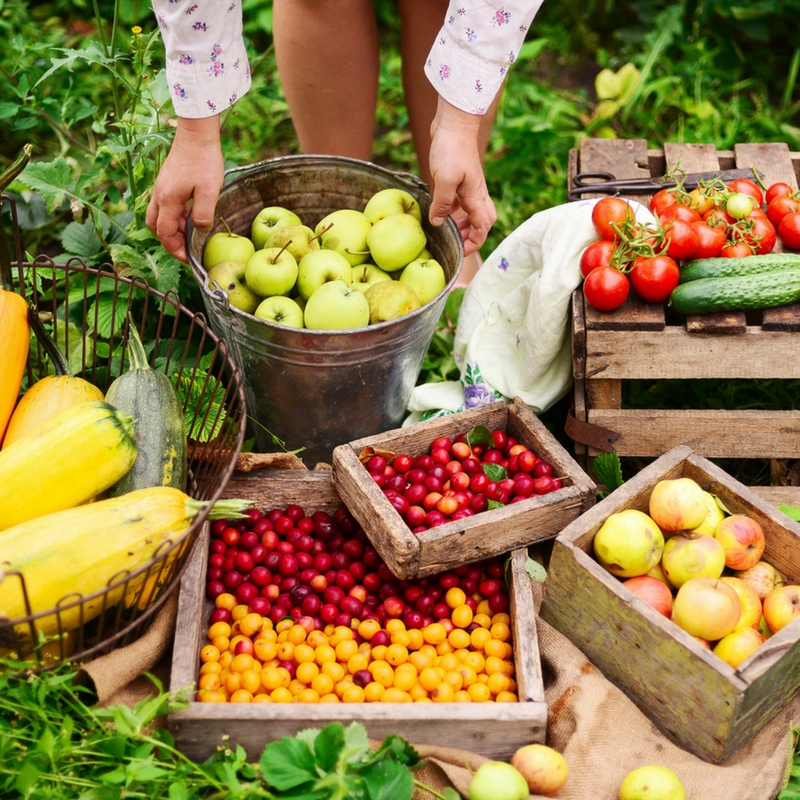
So, how was your garden this year? If it didn’t perform as you’d hoped it would, we have good news for you: Fall is the perfect time to ensure that next year’s spring garden is a winner.
From soil fixes to curing diseases and dealing with garden pests, tasks you perform now are well worth the time and energy spent.
Clean It Up
Sure, you can run around the garden yanking out dead plants as they pass into the afterlife, but why? Just wait until they all die off and then perform a mass “yank.”
Since garden detritus provides safe havens for over-wintering disease organisms and pests, bag up the dead plants or throw them into the compost bin.
Then, clean up the soil by removing dead leaves, twigs and anything else that will provide shelter for pests.
Attend To The Soil
Fall is the ideal time to prepare your vegetable and other garden soil for next season’s garden.
A 4-inch layer of shredded bark, combined with an equal amount of compost, dug into the top 6 inches of soil and left to overwinter will lighten up clay soil.
For even better results, add an additional 4-inch layer of wood chips to the surface of the soil and allow it to remain all winter.
Give other soil types a shot of compost spread over the surface. By spring, Mother Nature will have mixed it into the soil.
All vegetable gardens can use a bit of ammonium sulfate. The experts at Colorado State University Extension suggest adding about two and one-half pounds per 1,000 square feet of garden space, mixed into the soil to about 10 to 12 inches deep.
Take Care Of The Workhorses
Sure, it sounds trite, but perennials truly are the workhorses of the garden and they’ll work even harder for you next season if you pamper them now. Any that require cutting back should get the treatment now (don’t forget to remove the debris to keep pests and disease organisms away).
Inspect shrubs for any branches or stems that may be diseased, prune them off and then rake up the mulch under the plant (it may contain disease organisms or spores).
Then, as we get closer to winter, spread a 4- to 6-inch layer of fresh mulch (such as leaves or pine needles) over the soil.
And The Bulbs
If you want spring blooms from crocus, daffodils, or tulips, now through the fall (before the ground freezes) is the time to plant them.
The gardening gurus at Better Homes & Gardens suggest that you plant each bulb in a hole that is “two to three times deeper than the bulb is tall. So, if you have a 3-inch-tall bulb, dig a hole 6 to 9 inches deep.”
Tender bulbs, such as canna, dahlia and gladiolus should be protected from being brought to the surface by frost heave during winter. Use pine tree boughs, wood chips or pine bark, according to the experts at Better Homes and Gardens.
Don’t Forget The Trees
Get young trees ready for winter by using tree guards, wrapped around the trunk. This helps keep hungry critters from chewing on the bark.
Prune any branches that don’t look like they’ll stand up to winter weather and any that are crossing over one another (they may be wounded or break when they rub together during windy weather).
Continuing watering your evergreen trees right up until the first frost to protect the foliage from drying out.
That Luscious Lawn
Just because summer is over doesn’t mean your lawn doesn’t require attention. In fact, fall is the season when grass is working its hardest, taking in as much water and nutrients as possible to prepare for the dormant season.
Keep mowing and watering the lawn throughout autumn and, as winter approaches, cut it at the mowers lowest setting.
Don’t cut more than one-third of the lawn’s height in one mowing.
Fall is also the best time to aerate and fertilize the lawn. Use a broadcast or drop spreader to apply fertilizer evenly.
Finally, don’t allow fallen leaves to remain on the lawn over the winter. If you do, they may suffocate the grass or, according to Popular Mechanics, provide the ideal breeding ground for fungal organisms.
Now all you need to do is stock up on seed catalogs and gardening books to read by the fire. Before you know it, gardening season will be back and your little plot of dirt will be ready.
Powered by WPeMatico




